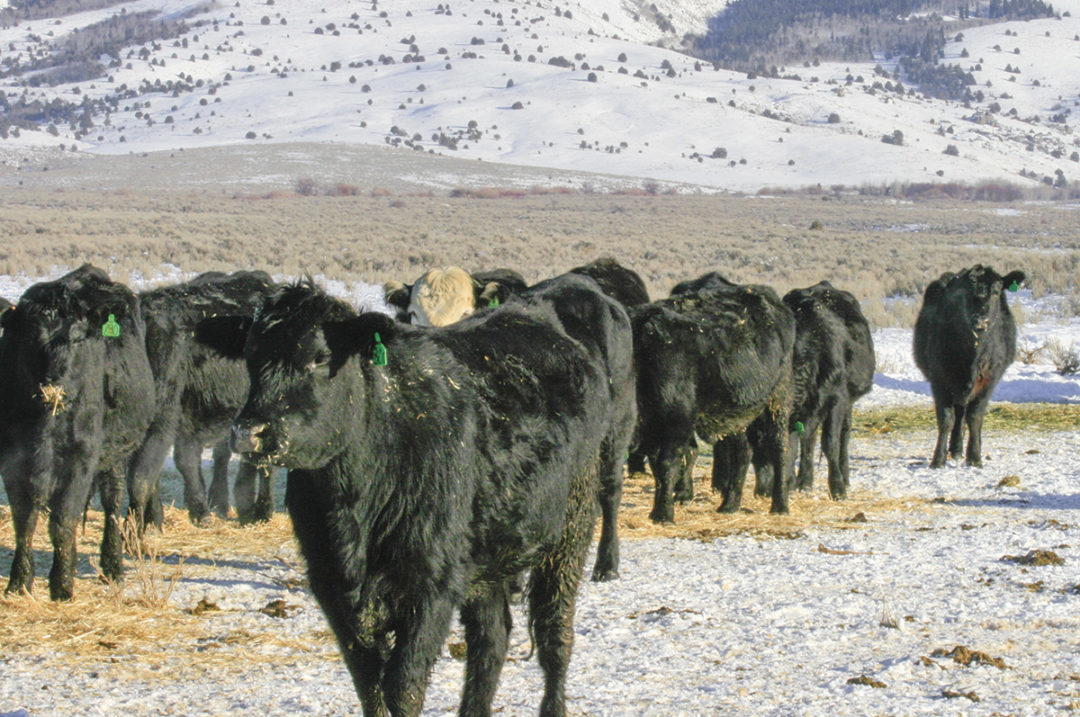Extension specialists across the country have been sharing the importance of forage testing with their beef clientele for years. Except for forage producers using hay analyses for marketing purposes, the real advantage of hay testing is not simply getting the results, but using those results to make meaningful decisions and make the hay feeding period more efficient.
Per unit of energy, hay is often the most expensive feedstuff on a given operation. The energy in hay can become even more costly when harvested overly mature or when drought conditions decrease forage yields. When we start thinking about hay as the valuable commodity it is, it makes sense that we should be doing everything we can to efficiently manage that resource.
When thinking about managing hay resources, the first thing that should come to mind is forage testing; it’s difficult to manage what isn’t measured. Test each lot of hay separately each year. A “lot” of hay is defined as hay harvested from the same field, under the same conditions and stored in the same way. So, for example, if I harvested and baled hay from a single field, but half of that hay was stored outside while half was stored in the barn, that would now be considered two lots. Once samples have been collected and submitted to a laboratory for testing, the lab will send you a report that includes moisture, protein, fiber, energy and sometimes mineral content. The actual number of nutrients that are analyzed will vary from lab to lab and depends on the selected test. For help choosing which test is appropriate for your operation and needs, work with a nutritionist or extension agent. Once all the lots of hay have been analyzed, we can start making decisions about how to feed the hay, with the goal of feeding the highest-quality available hay to cattle with the highest nutrient requirements, while saving lower-quality hay for those cattle that have lower nutrient requirements. I call this feeding the right hay to the right cow at the right time.
Table 1 shows average hay test results from samples collected in Kentucky in 2021. The samples were ranked in terms of protein and energy requirements, and the bottom, middle and top thirds were grouped together. This data clearly shows the vast variation in forage quality that can exist even within a single reach during a production season.

To further emphasize the importance of feeding the right hay to the right cow at the right time, if we used the averages shown above to balance a ration for lactating cows, the bottom third would require almost 5.5 pounds of dried distillers grains (DDGs) per head per day to meet the nutrient requirements of a mature cow in adequate body condition. Compare this to feeding the top third hay to the same lactating cow; she would only require 0.7 pound of DDGs daily. The added supplementation costs for providing the lower-quality hay to a cow with high nutrient requirements, such as the lactating cow, can cost several hundreds of dollars monthly for smaller producers to thousands of dollars for larger operations. That same bottom-third hay would require no supplementation if fed to a dry cow in mid-gestation.
Lastly, it is important to talk about selecting the right supplement, which comes down to understanding whether the hay test results lacked energy, protein or both. Some supplemental feeds, such as corn or soyhulls, are excellent energy sources while others, such as soybean meal, are better at supplying protein. Other feeds can provide a decent amount of protein and energy, including things like distillers grain byproducts.
To help with selecting which supplement or combination of supplements is the most economical, feedstuffs should be compared on a cost-of-nutrient basis. For example, suppose I am debating between feeding corn gluten feed or dried distillers grain as a protein supplement. In that case, I must compare the cost per pound of crude protein (CP) supplied from each feed to determine the most economical choice. To make this comparison, we need to know the dry matter (DM) content of the feeds, the protein content of the feed and the cost per ton of each feed, then follow these simple steps:
- Convert each feed to a dry matter basis: 1 ton of dried distillers grains at 90% DM: 2,000 × 0.90 = 1,800 pounds of DM
- Convert pounds of dry matter to pounds of protein: 1,800 pounds × 0.30 (CP) = 540 pounds of CP
- Calculate the cost per pound of CP using the cost per ton of dried distillers grains: $258 / 540 = $0.48 per pound of CP
When corn gluten feed (90% DM, 25% CP) is available at $198 per ton, DDGs at $258 per ton is still the more cost-effective feed ingredient for meeting protein requirements. Now, we are feeding the right hay to the right cow at the right time with the right supplement! If working with a nutritionist, they can certainly help determine the most cost-effective feeding program based on current feed prices in your area. Remember, the most economical supplement may not be the cheapest on a price-per-ton basis!
Of course, many other steps can be taken to improve how we store and handle hay that can help improve the efficiency of this process. Storage and feeding losses are real and can be as high as 30% to 50% of the bale weight.
While feeding hay is not necessarily an enjoyable part of cattle production, in many parts of the country, it is a necessary practice, and we should be doing everything we can to improve the efficiency of the process.









